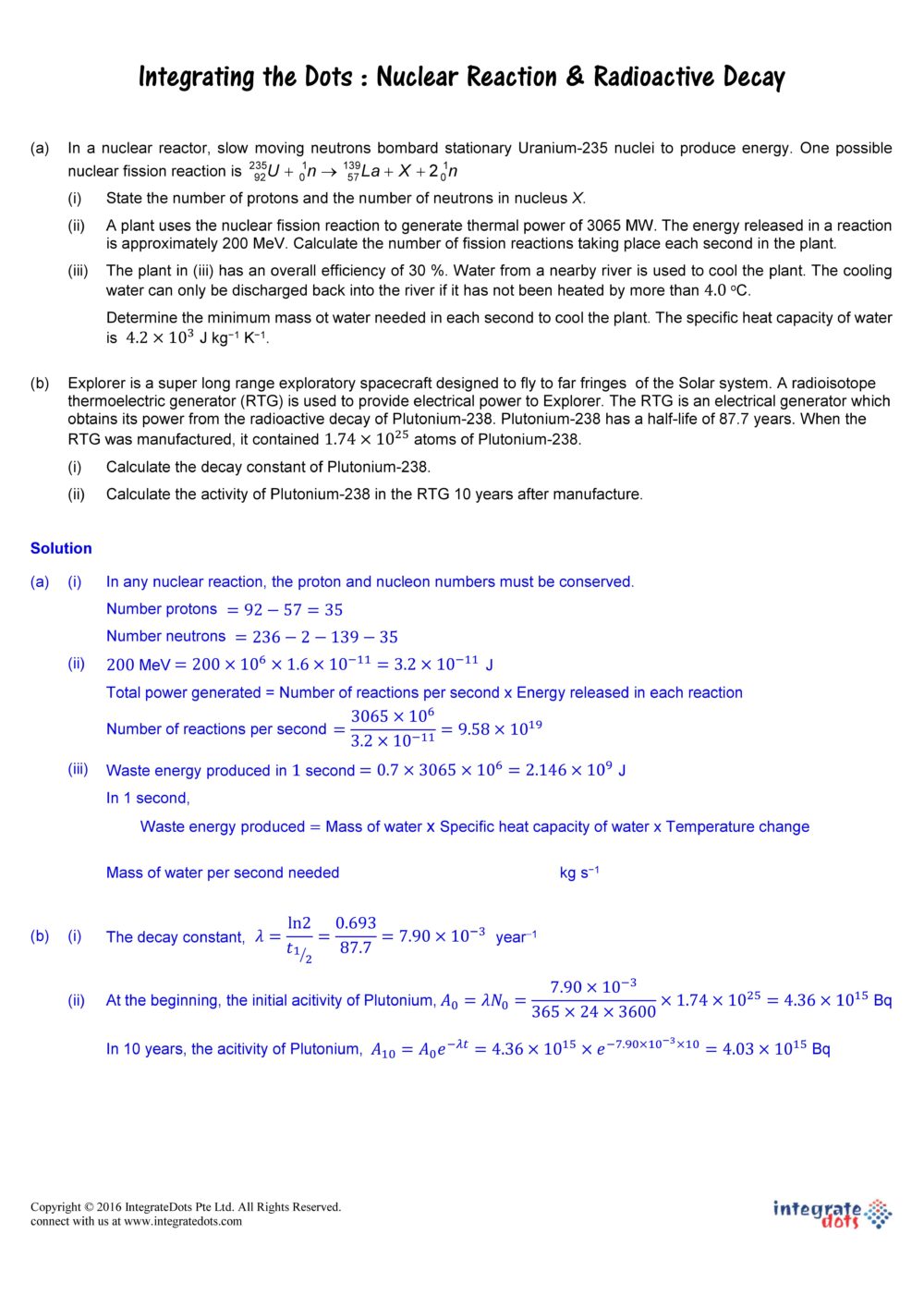Nuclear reaction is a process in which two nuclei or nuclear particles (collectively called reactants) collide to form different nuclei or particles (collectively called products). There are two common nuclear reactions – fission and fusion.
In a familiar fission reaction, a neutron collide with a uranium nucleus to destabilize it. Consequentially, the unstable nucleus splits up to form two smaller and more stable nuclei. Since these two nuclei have higher binding energy per nucleon than the original uranium nucleus, energy is released in fission.
Fusion is the process by which two very light nuclei fuse together to form a heavier nucleus. Since the heavier nucleus has a higher binding energy per nucleon than those of the two light nuclei, energy is released in fusion. It takes a lot work to fuse the two light nuclei to form a heavier nucleus. It is much easier to achieve fission than fusion.
Radioactive decay happens when the unstable nucleus of an atom discharges a particle (e.g. alpha, beta, gamma, … etc). It is a spontaneous and random process. This means it is impossible to predict when a particular nucleus is going to decay. And, each nucleus has an equal chance of decaying per unit time. However, for a large number of nuclei (say a million or more), we can use the law of mathematics to determine the average decay rate. The probability that an individual nucleus will decay per unit time interval is the decay constant.
The activity of a radioactive sample is the rate at which nuclei decay. An activity of one decay per second is one becquerel (1 Bq). Hence, the activity of a sample is given by the product of decay constant and the number of undecayed nuclei present.
If you are struggling with pre-university Physics and need help, please get in touch with us. We offer a unique & superior coaching program that is more effective, flexible and cheaper. We don’t tutor, we coach!

